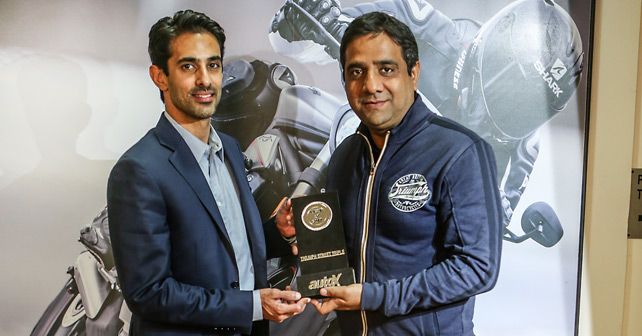
Triumph Street Triple S
How has 2017 been for Triumph in India?
The year has been really good. In fact, when we launched the Street Triple RS, we discussed our retail numbers, and, at that time, we had a growth of 22%. As of right now, our growth is 30% – and that’s unbelievable for us. To be honest, we don’t have enough bikes to build, assemble or sell. The demand is, honestly, more than what we expected.
The good thing for us is that the industry is back on a growth path. For us, it’s our new products that are driving the volume, with the full classic Bonneville range and the adventure range. With the Bobber and the Scrambler, there was a thrust on the classic side of things, and in terms of adventure, our Tiger training academies are a huge growing brand for us – especially given that we have over 750 Tiger customers already in India. And this is growing every day – as you and I talk, we would have already sold one more Tiger somewhere in the country. However, in terms of our urban bikes, we were feeling a little bit of heat in the Street Triple segment. The transition from the last-gen Street Triple to the new one took a lot of time, but the response to the new Street Triple has been fantastic. And that’s the third category that has done really well. So, overall, our portfolio has been doing well – with our biggest sales coming from Bangalore and Delhi.
Where do you see future growth coming from – is it from the adventure bikes, classics or something else?
You know, we have to look at this matrix from another perspective. For example, over 50% of our product portfolio has become classic bikes, and within the classics I have a sub-range – like the Scrambler, which can be used in various conditions, and the Bobber, which is ideal for customisation. And then there are the regular models, such as the T100, Thruxton R, T120, etc., so that portfolio is maintaining good growth as even youngsters are getting attracted to the range. Previously, you could see that the perception was that the classic range was for older riders, but that’s changing now and even youngsters are getting attracted to our classic range. At the same time, we’re seeing constant growth in the adventure segment too. Also, the competition is increasing in that segment – so the industry, by-and-large, is growing there.
Growth segments, I would say are purely classics and adventure today – with some contribution from the urban bikes segment. However, we’re also seeing a change in preferences as far as cruisers are concerned, as it seems that customer interest in cruiser bikes is dropping a bit.
Do you think that, given the large size of cruisers, Indian customers may have an issue with their size – which makes them tricky to handle in our environment?
You know, there is a history of cruisers in India – they were a reasonably large segment, and of course, there are practical problems with riding a cruiser in India. You cannot go into high traffic zones, and riding them inside the city can be quite taxing. And I think, in India, people are not looking to buy a bike only to use it for one purpose – say, ride it on the highways. What they want is a bike that they can use in a multiple of ways – on the highway, in the city, etc. So, I think that the basic thought process is such that a bike should be able to serve multiple purposes, which is why the Indian customer is looking more at classic and adventure bikes.
What is the progress on Triumph’s alliance with Bajaj Auto?
The tie-up, as of now, is only an intent that has been signed by the two companies to explore the mid-segment motorcycle space. The basic objective is to produce premium motorcycles at an affordable price point. I can’t give you any specifics because modalities are being worked out as we speak, and I think in the next six months we’ll have more clarity on how the alliance is shaping up. But, I think this is fantastic news for customers in India, as we hope to target millennial customers with new premium offerings in alliance with Bajaj.
What do you expect from 2018?
I think 2018-19 should be one of our best years, because the industry is getting some of the best conditions right now. Sure, there is some short-term tension, but in the long term it’s a positive outlook. Infrastructure is also being focused on in a big way. Interest rates have really come down, and for us that’s very positive. Plus, customer preference towards indulging themselves is increasing while the per capita income is also going up steadily – so affordability is getting better for a wider populace. So, I think the industry should do well as the sentiment is growing increasingly positive. From Triumph’s perspective, our strategy from a product point of view is very clear – we’re rolling out a new product virtually every quarter.

























Write your Comment